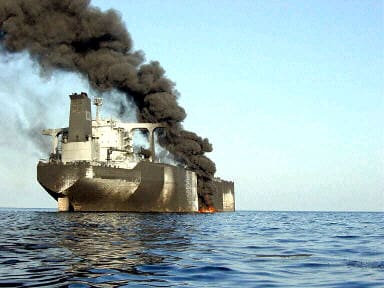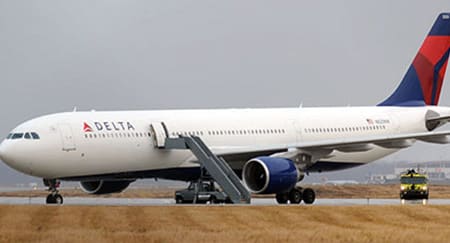Since its emergence in January 2009, al Qaida in the Arabian Peninsula (AQAP) has developed into an agile and internationally lethal organisation. But it thrives in Yemen because the country has so many other problems, says Chris Boucek.
Al Qaida and the organisations it inspires are finding safe haven in Yemen’s under-governed areas. The deteriorating security situation offers terror organisations a nearly perfect environment to operate in and mount operations in and out of the country.
Yemen is a country of critical concern for the United States, the North Atlantic allies, and the wider international community. Here’s why:
- the country is faced with a daunting list of converging crises, including a looming economic collapse, weak governance, and internal instability
- the government in Sana’a doesn’t enjoy full control over its territory
- and a civil war in the North is jeopardising the country’s legitimacy and stability, along with the deepening secessionist movement in the South, and a resurgent al Qaida organisation.
It is this last challenge - the presence of al Qaida in the Arabian Peninsula (AQAP) - that has refocused global attention on Yemen.
Yemen rose to the top of the international headlines following the attempted terrorist attack on Northwest Airlines Flight 253 bound for Detroit on December 25 last year. With responsibility claimed by AQAP, US security officials are seriously worried about the deteriorating situation in the country. For the past 12 months, Yemen has been a security concern for the American administration second only to Afghanistan and Pakistan (orAf/Pak as the region has been dubbed).
Yemen-based AQAP may be a greater threat to international security than ‘al Qaida central’, believed to be hiding in Pakistan
Separately, American officials have recently stated to both the New York Times and the Washington Post that Yemen-based AQAP may be a greater threat to international security than ‘al Qaida central’, believed to be hiding in Pakistan.
Yemen has a long history of terrorism and extremism. Religiously and socially very conservative, a large number of Yemeni nationals fought against the Soviet occupation of Afghanistan in the 1980s. Following the conflict many of the so-called ‘Arab-Afghans’ resettled in Yemen, including non-Yemenis who were unable to return to their own countries.
Al Qaida’s first operation against American targets took place in Yemen almost 20 years ago. In December 1992, two hotels in Aden that had housed US service personnel en route to Somalia were attacked, killing two bystanders. Eight years later, the October 2000 attack on the USS Cole in Aden harbour killed 17 sailors. A similar attack almost two years to the date on the French crude carrier MV Limburg led to another death and the loss of 90,000 tonnes of crude oil.
Despite initial counter-terrorism successes made against al Qaida in Yemen following the September 11th attacks, the organisation has surged back. Analysts have noted several factors which have contributed to this, including:
- difficulties and distrust in the bilateral US-Yemeni relationship,
- a generational split amongst Islamist militants,
- and the radicalising effects of the Afghan and Iraq wars.
The situation has been compounded by deteriorating economic and social conditions in Yemen, as well as the domestic perception of diminished Yemeni government legitimacy due to its counter-terrorism cooperation with the United States.
In recent years, there has been a significant uptick in attacks within Yemen. A July 2007 car bomb killed eight Spanish tourists and their local driver at an archeological site in Marib. In January 2008 two Belgian tourists were shot and killed in Hadramout in eastern Yemen.
Later that spring there were several attacks inside the capital Sana’a, including mortar attacks on the US embassy, a western housing compound, the Italian embassy and the Yemeni Customs Authority. During this same period there were also reported attacks in Sana’a against the offices of a western oil company and a restaurant frequented by westerners.
In 2008, as the security situation in Saudi Arabia improved, al Qaida advised its operatives in the kingdom to seek refuge in Yemen
In September 2008, the US embassy in Sana’a was attacked again, this time by two car bombs. Ten people were killed, including six Yemeni security officers, although the attackers failed to breach the embassy’s outer perimeter. The shift of violence to the capital marked a significant deterioration. Previously it was though that Sana’a’s security levels would preclude such operations.
In 2008, as the security situation in Saudi Arabia improved, al Qaida advised its operatives in the kingdom to seek refuge in Yemen. In January 2009, a video was released announcing the merger of the Saudi and Yemeni affiliates of al Qaida. The newly christened al Qaida in the Arabian Peninsula was comprised of Yemeni nationals as well as a significant number of wanted Saudi extremists. At the time of the merger, it was believed that roughly 30 per cent of Saudi Arabia’s most wanted terrorists were in Yemen, including 11 returnees from Guantanamo Bay (four Guantanamo returnees have since been killed or captured).
Throughout 2009 the pace of attacks intensified. Four South Korean tourists were killed in a suicide bombing in Hadramout in February and another suicide bombing in Sana’a targeted the South Korean motorcade of the victim’s family members as they headed to the airport. In April, Saudi authorities announced the capture of 11 fighters who had crossed into Saudi Arabia from Yemen. The group allegedly possessed components for more than 30 suicide vests. This was the first concrete indication of Yemeni instability threatening Saudi security.
Shortly after this attack AQAP boldly stated that they had mastered a new explosive compound which could not be detected, and that they would use it again soon. On Christmas Day the same chemical explosive and attack profile was used in the operation on Northwest Flight 253. AQAP claimed responsibility for the attack.
The failed Northwest bombing is significant: it is al Qaida’s first operation against an American domestic target not conceived in South Asia. It also further marked Yemen as an emerging safe haven for al-Qaeda aligned and affiliated extremists to plot, plan, train, and launch operations within Yemen, regionally, and internationally.
Throughout 2010, violence has continued. According to one recently produced timeline, there have been over 30 AQAP-related attacks through August, including the April attempted assassination in Sana'a of the British ambassador en route to the embassy. Since May, some 38 Yemeni intelligence and security officers have been killed in what some observers are beginning to call a coordinated campaign.
AQAP’s trajectory plainly shows that it’s an organisation increasingly capable of mounting deadly operations inside Yemen, regionally directed at Saudi Arabia, and internationally against the United States and its European allies. For the past several years AQAP has clearly stated what it has intended to do, and has sought to follow through on its threats.
The organisation has learned from ts mistakes in Saudi Arabia, and has consistently sought to increase its viability within Yemen by avoiding large scale mass casualty attacks. Its primary targets continue to be foreigners and tourists, energy infrastructure, and the government security services that are pursuing it.
While short-term security and immediate counterterrorism operations are important, long-term development assistance cannot be ignored
Without a doubt there is an immediate counter-terrorism imperative in Yemen. However, this approach must be broader than simply kill or capture operations. The lack of security and counter-terrorism aren’t the biggest threats to Yemeni stability; they are the international community’s greatest concerns, but AQAP will not lead to state collapse in Yemen.
While short-term security and immediate counterterrorism operations are important, long-term development assistance cannot be ignored. With the interconnected economic, government, and security situations Yemen could get a lot worse and there needs to be immediate, sustained, and high level attention on helping the country avoid failure. There needs to be an integrated and comprehensive approach that doesn’t ignore the underlying sources of instability.
The root causes of the instability, including corruption and poor governance, are what threaten to overwhelm the Yemeni government. Focusing too narrowly on fighting terrorism will only further inflame other grievances that give rise to militancy. And, without strong pressure and support from the international community, it is unlikely that the Yemeni government will address the systemic challenges facing the country.



